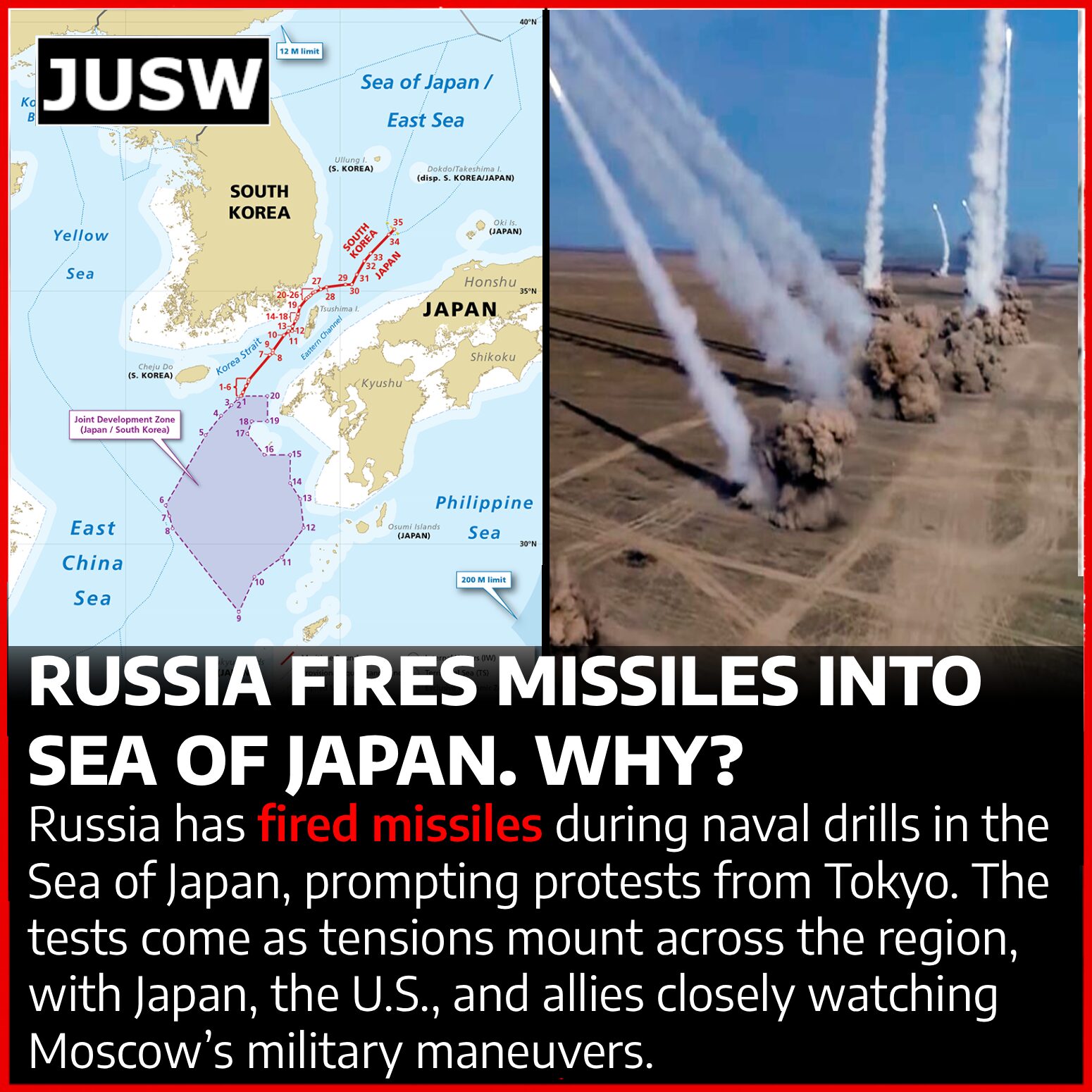Russia’s Missile Drills in the Sea of Japan Raise Alarm Across Asia
Russia has carried out naval missile tests in the Sea of Japan, heightening concerns among neighboring countries wary of Moscow’s growing military assertiveness. The drills included live-fire launches from Russian warships, with projectiles landing in designated zones of international waters. Japan quickly lodged a diplomatic protest, calling the move destabilizing and irresponsible in a region already under strain from North Korea’s missile activities and China’s maritime expansion. Analysts say Russia’s actions are part of a broader show of strength in the Indo-Pacific, meant to demonstrate reach even as Moscow remains bogged down in the war in Ukraine. The incident underscores how the Sea of Japan is becoming an increasingly contested arena for great-power competition. Washington and Tokyo are expected to discuss enhanced military coordination in response to rising risks.
Moscow’s Message to the Region
The drills went beyond routine training. Russian defense officials said Pacific Fleet warships launched both cruise and anti-ship missiles against simulated targets, supported by naval aviation and drones. The timing of the exercises suggests they were intended as a political signal as much as a military test.
For Moscow, showcasing military capability in East Asia serves multiple purposes. It projects strength far from Ukraine, countering perceptions that its armed forces are overstretched. It also highlights Russia’s ongoing partnership with China, which has conducted joint naval patrols with Moscow in recent years. By holding drills in contested waters, Russia reminds Tokyo and Washington that it can raise pressure across multiple theaters at once.
Japan’s Uneasy Response
Japan reacted swiftly, filing a formal protest. Defense officials condemned the launches as destabilizing, stressing that the Sea of Japan is already crowded with North Korea’s frequent missile tests. Tokyo warned that such actions heighten the risk of miscalculation, especially near busy shipping lanes and fishing zones vital to Japan’s economy.
Prime Minister Shigeru Ishiba’s government has made defense modernization a core priority, with record increases in military spending and stronger security ties with the United States. The Russian drills are expected to accelerate Japan’s push for greater deterrence capabilities, including counterstrike options and enhanced missile defense systems.
A Crowded and Dangerous Arena
The Sea of Japan is fast becoming one of the most militarized maritime zones:
-
North Korea continues to fire ballistic and cruise missiles as part of its weapons program.
-
China is expanding its naval presence, disputing fishing rights and maritime boundaries with Japan and South Korea.
-
The United States and Japan conduct regular joint exercises to demonstrate alliance strength.
-
Russia’s latest maneuvers add yet another layer of volatility, raising the risk of close encounters between rival forces.
Strategic Implications for the Indo-Pacific
While the immediate threat from Russia’s drills is limited, the symbolism is significant. Moscow is signaling that despite sanctions and the war in Ukraine, it can still project power into Asia. This complicates the strategic calculations of the United States and its allies, who must account for Russia alongside China and North Korea in the Indo-Pacific.
For Washington and Tokyo, the incident is likely to accelerate trilateral coordination with South Korea and Australia. It also strengthens the case for deeper integration of missile defense systems and intelligence-sharing networks across allied nations.
Looking Ahead
The missile drills highlight how historical tensions, ongoing conflicts, and great-power rivalry are converging in the Sea of Japan. While Russia’s actions may not trigger an immediate crisis, they reinforce a dangerous pattern of overlapping military activities.
As Japan, the U.S., and their allies consider next steps, one conclusion is clear: the Indo-Pacific security environment is becoming more complex and volatile. The Sea of Japan is no longer just a regional flashpoint; it is emerging as a frontline in the broader contest between democratic allies and authoritarian powers.
Key Takeaways
-
Russia’s missile drills in the Sea of Japan were a calculated show of force.
-
Japan condemned the launches as destabilizing and filed a protest.
-
The drills add to regional strain already fueled by North Korea and China.
-
The U.S. and Japan are expected to deepen military coordination in response.
-
The Sea of Japan is increasingly central to great-power competition.

